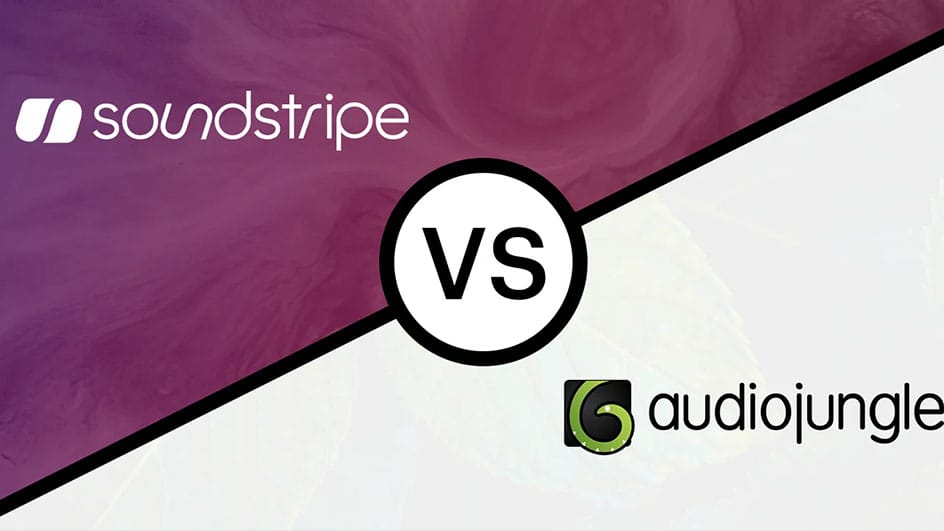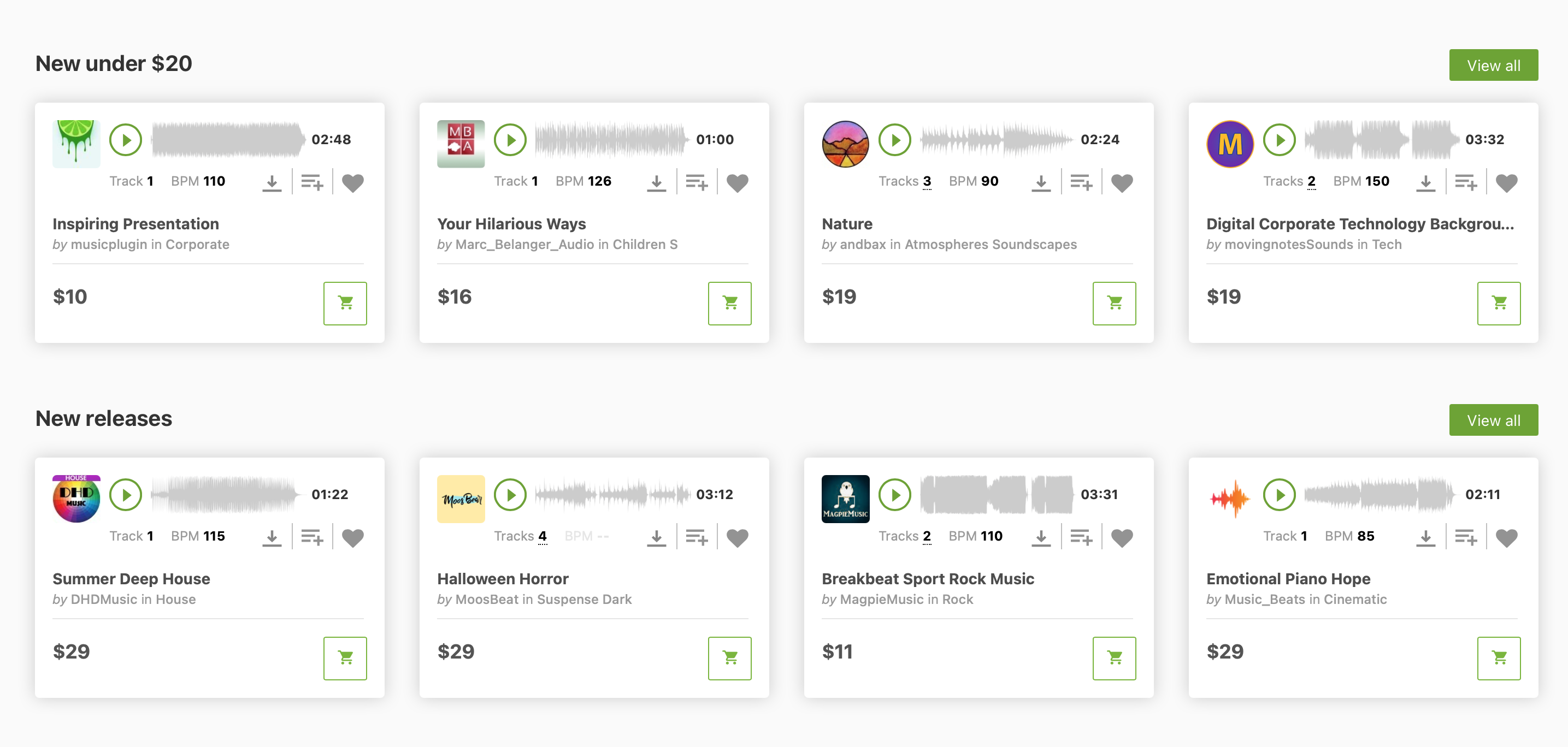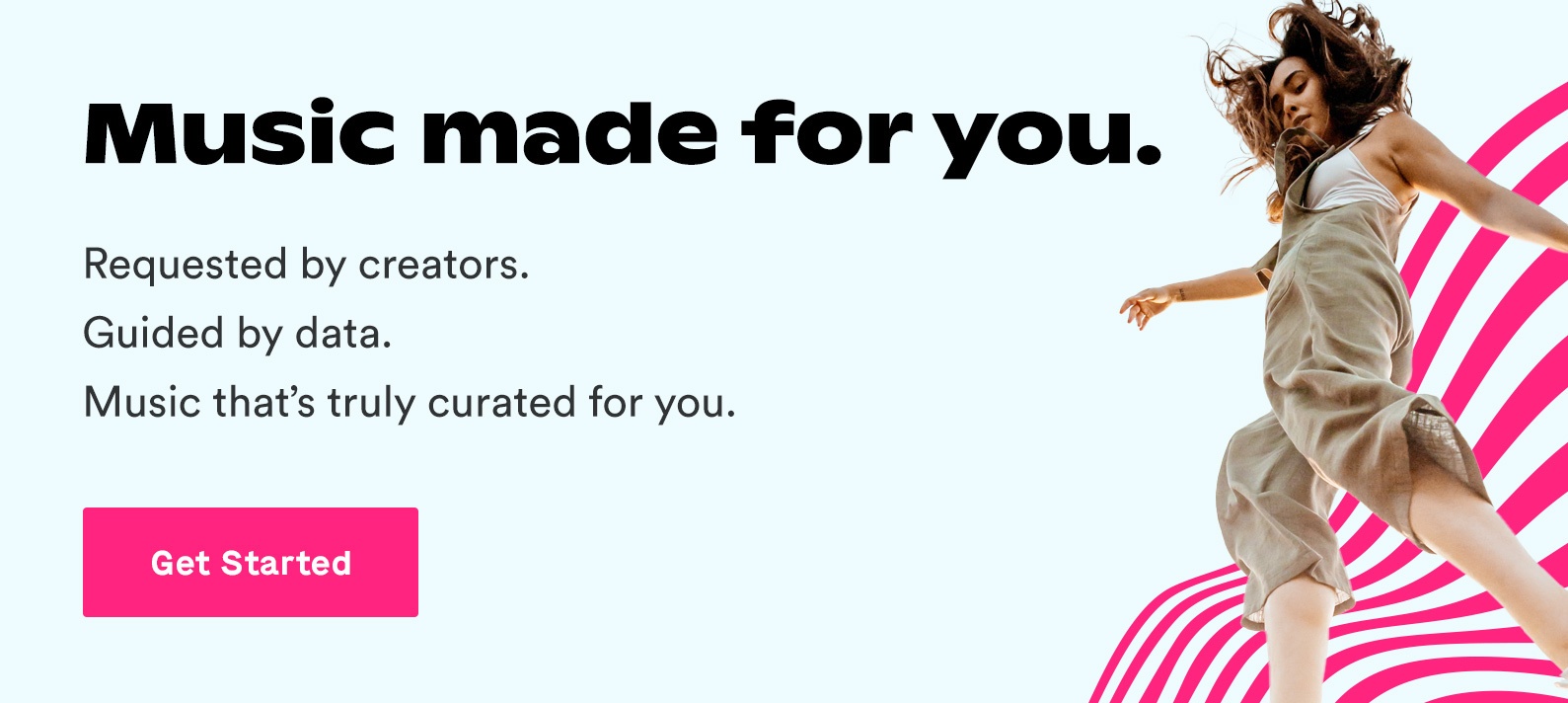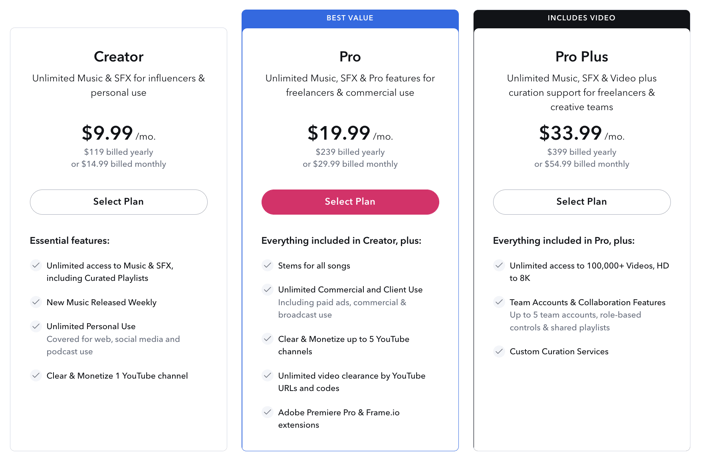
Dec 12, 2019
*Updated March 2022
The fact that you’re on this page means you are a content creator looking for royalty free music. It also means you’ve done your homework and you think that Soundstripe might be a good fit for your filmmaking needs.
But you’ve got a whole bunch of options in this day and age. We understand why you’d want to make sure you invest in a platform that works best for you and your budget. After all, why would you pay more for one song license than you’d spend on that new lens you’ve had your eye on?
To help you figure out which royalty free music service is a better fit for your business, we’re going to dive into the similarities and differences between two popular royalty free music sites: AudioJungle and Soundstripe.
First, let’s start with a third-party review of Soundstripe. (We may be a little biased, so it’s only fair that you hear about our service from another creator instead of us.) Then we’ll break down how these platforms line up on the big issues: music libraries and pricing models.
Here’s the video review of Soundstripe:
A Few Quick Notes
You might think that royalty free music companies are all mostly the same. After all, they offer the same type of product — how different could they be?
The truth is that there are several big differences in the Soundstripe vs. AudioJungle conversation, and we think they could affect your decision. (After all, library size/song selection and pricing models are big deals when you want to get the most bang for your buck.)
And before we dive into things, one point worth mentioning is that AudioJungle is owned and operated by a company called Envato. The parent organization offers a bunch of different services, like stock photos, website plugins, and more.
Royalty free music is just one branch of Envato’s business. This is something that a lot of forums and customer reviews talked about, so we thought it was worth mentioning here.
Now, let’s start with the first big difference between AudioJungle and Soundstripe: song libraries.
Library Comparison
AudioJungle has an enormous library with a combined 1.8 million songs and sounds. (There’s a counter right on the main dashboard that tracks this number.) They’ve got a good platform for user-created content, which helped the site build such a large catalog.
They also split their content up across a variety of different tabs. Breaking it down into a bulleted list will help organize things a bit:
- The music section can be filtered by genre or by what's most popular. This is where you shop for individual songs.
- The music kits are 3-track bundles available for purchase, usually at a discounted rate than if you got each song separately.
- The music packs are a content bundle with more than one song.
- The logos and indents are basically a form of sonic branding. You can purchase individual tracks or bundles, depending on what you need.
- The sound effects section has a lot of genres to search, such as domestic sounds, industrial sounds, and interface sounds.
- The Video Maker app is a separate tool entirely, but is included with the audio options.
Soundstripe has less content, but that’s by design. Each song is recorded by one of our musicians, and our music team curates all of our content to make sure songs are the highest possible quality. It’s a way to remove less popular songs and add to the genres our users are using most.
In total there are more than 9,000 songs, more than 60,000 sound effects, and more than 100,000 stock video clips. You can get all of this with lifetime licensing protection under a single subscription.
Pricing Comparison
The biggest difference in the Soundstripe vs. AudioJungle discussion comes down to the pricing model. AudioJungle primarily licenses music by individual purchase, so you might pay anywhere between $10 and $70 to get a song for your project.

Remember, these licenses come with a few other requirements. You can only use the song in one project, but it can be either commercial or non-commercial. And your project can only be copied (or “used”) 10,000 times, which applies to YouTube views or podcast listens.
Also, these AudioJungle licenses do not cover broadcast use. You can choose to buy a broadcast license instead, but that does push things into a higher price tier. As an example, a $10 song costs $58 for a Music Broadcast license or $464 for a Music Broadcast & Film license.
You can also sign up for an Envato Elements subscription for $16.50/month, which gives you access to a bunch of different resources and media types including music.
Soundstripe uses a subscription service plan, which is fairly straightforward. It functions like your Disney+ or Spotify Premium subscriptions: You pay a fee and get access to a library of awesome stuff.
Here's what that looks like:
It’s a one-and-done kind of plan that we created to make your life easier. You won’t have to worry about budgeting for new licenses with each project, because your subscription grants you access to everything you need.
Soundstripe vs. AudioJungle
Most royalty free music services have a few similarities, but also some big differences. And in the end, the ball is in your court — only you know what would work best for your hobby, career, or business as a filmmaker.
We think it’s our job to give you the resources and information you need to make a good decision. Our goal is to help filmmakers create amazing content, and part of that is helping you save time, money, and effort with things like finding the perfect song.
So choose a music service, and then get back to making the things you love.
Further reading
Interested in reading more top resources and getting our best filmmaking tips and tricks? Here are a couple of our most popular articles from across the Soundstripe blog, including other comparisons between some of the most popular royalty free music companies:

